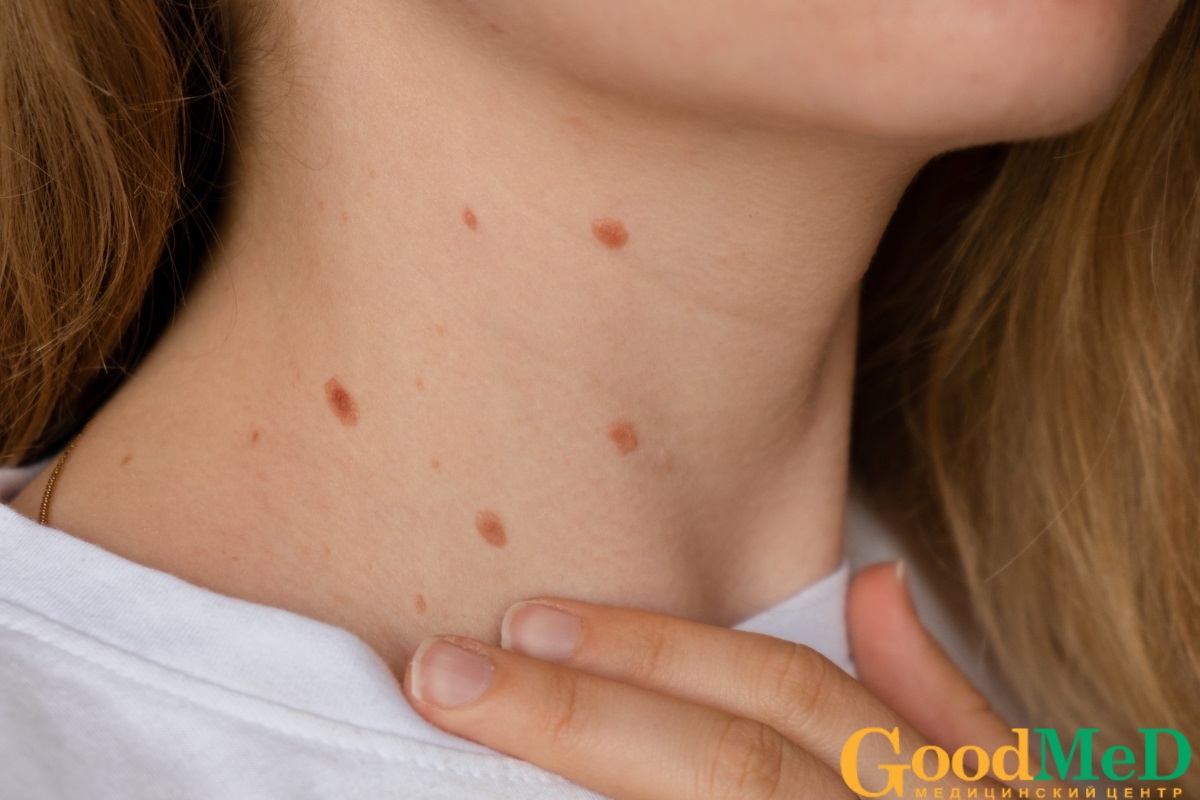Last Updated on October 21, 2025 by mcelik

It’s important to know when kids start getting moles on skin. Studies show that many kids get a mole on face or other areas in the first two years of life.
The look of normal moles can be affected by genes and sun. These also play a part in the risk of skin cancer later on. At Liv Hospital, doctors stress the need for early checks and good skin care for kids.
But why do moles pop up suddenly? The reasons can differ, but knowing what causes them is vital for keeping skin healthy.

It’s important for parents to know when and how moles appear in kids. Moles, or nevi, are common skin growths found anywhere on the body. Knowing when they develop is key to keeping kids healthy.
About 2.3% of kids are born with moles. These moles are there from the start and can look different in size and shape.
The first year is a big time for moles to show up. By six months, 10.8% of kids have moles. By 12 months, that number jumps to 65.2%. This shows why it’s vital to watch for moles early on.
By two years old, almost all kids have moles. This means the first two years are very important for mole growth. Knowing this helps parents keep an eye on their child’s skin.
It’s key to watch moles to keep skin healthy and catch any problems early. Regular doctor visits can help and make parents feel better about their child’s health.
Moles in children can worry parents. It’s important to know the different types to check on their skin health. Moles are usually harmless but can look different.
Common moles, or acquired nevi, are the most common in kids. They are small, round, and brown. You can find them anywhere on the body. They are mostly harmless but need watching for any changes.
Congenital moles are there from birth and are rare, found in about 1% of babies. They are often bigger and more noticeable than common moles. They might have a slightly higher risk of turning into melanoma, but this risk is low.
Atypical moles, or dysplastic nevi, look different. They are bigger and have irregular shapes and colors.
Kids with these moles might be at higher risk of melanoma later. So, it’s key to keep an eye on them.
Knowing about these mole types helps parents check their child’s skin. It tells them when to see a doctor.

Several key factors contribute to the formation of moles on a child’s skin. Understanding these factors can help parents and caregivers take preventive measures and monitor their child’s skin health effectively.
Children with a family history of moles are more likely to develop them. Genetic predisposition plays a significant role in determining the number and appearance of moles.
Fair skin, light hair, and light eye color increase the risk of developing moles. Children with these characteristics should be monitored closely.
Environmental factors, such as exposure to UV radiation, can trigger mole formation. Protecting children’s skin from the sun is key in preventing moles.
Moles on visible skin areas can affect a child’s health and mental well-being.
Moles can pop up anywhere, but some spots are more common. The face, neck, and arms are often affected.
Moles on visible spots can hurt a child’s self-esteem and how they interact with others. It’s key for parents to talk about any worries their child has.
“Children with visible moles may face teasing or feel self-conscious about their looks.”
Removing facial moles might be an option if they really bother the child. Talking to a dermatologist is important to figure out the best move.
Skin moles often appear due to sun exposure, mainly in childhood. Sunlight has ultraviolet (UV) rays, which can cause moles to form.
Children’s skin is more sensitive to UV rays. Ages 6 months to 18 years are key times for sun exposure. Severe sunburns during these years can raise the risk of moles.
UV rays harm skin cells’ DNA, causing mutations that lead to moles. Prolonged exposure to UV radiation without protection increases this risk.
It’s important to shield children from too much sun. Use high SPF sunscreen, dress them in protective clothes, and avoid outdoor time when the sun is strongest (10 am to 4 pm).
By following these steps, parents can lower their kids’ chance of getting skin moles and other sun-related problems.
Checking your child’s moles regularly is important for their health. Moles can grow or change, and noticing these changes is key.
The ABCDE method helps check moles. It stands for Asymmetry, Border, Color, Diameter, and Evolving. A mole that’s not symmetrical, has an odd border, or changes color or size is a concern. For example, a raised mole or a black mole that changes should be checked closely.
It’s normal for moles to change a bit over time. But, big changes can mean trouble. Parents should know what a mole usually looks like. Watch for any odd changes, like bleeding or itching.
Keeping a record of your child’s moles is helpful. Take photos and note their size, shape, and color. This info is great when you talk to a doctor.
Childhood moles can have long-term health implications that parents need to think about. Most moles in kids are harmless, but knowing their possible effects is important for keeping them safe.
Studies have found that the number of moles in teens, around ages 13-14, can hint at future melanoma risk. A higher mole count during this time might mean a higher risk.
The risk of melanoma from childhood moles is actually quite low. Less than 1 in 200,000 cases. It’s important to stay calm and keep an eye out for any changes.
Parents and caregivers should be careful about watching moles but also keep things in perspective. Regular doctor visits and checks can spot any problems early.
It’s important to know about moles in kids for their health. Moles on skin can worry parents. Moles grow due to genes and the environment, like where they form on the skin.
Kids usually get moles early, often by age two. Parents should watch these moles and notice any changes. Catching problems early is key.
Liv Hospital offers top care for kids with moles. Knowing about moles helps parents and doctors work together. This ensures kids get the best care.
Being informed and careful helps keep kids’ skin safe. It also helps deal with mole concerns.
Subscribe to our e-newsletter to stay informed about the latest innovations in the world of health and exclusive offers!